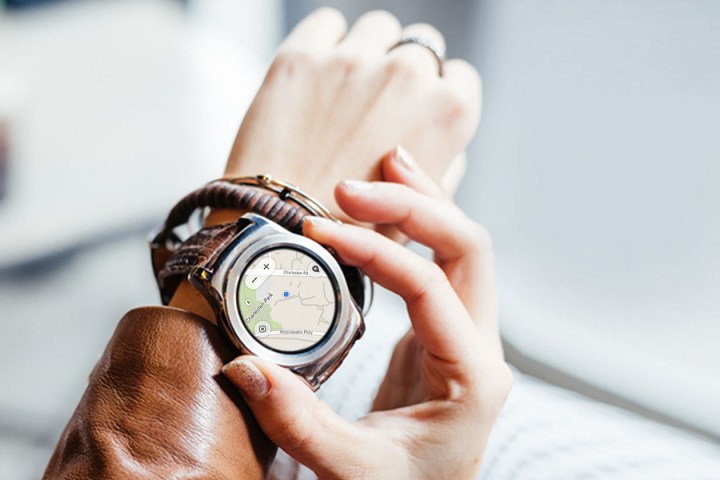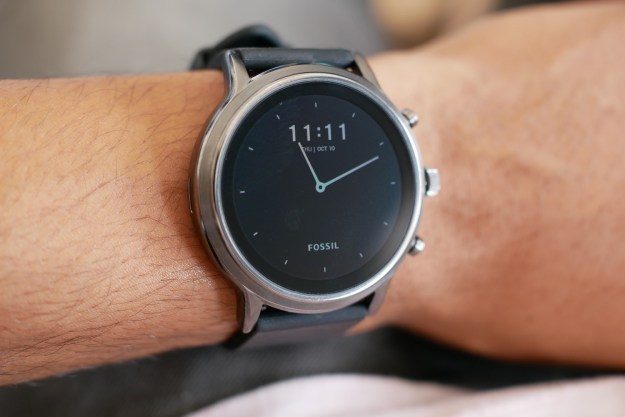
Smartwatches make me mad. Really red-faced, fist-clenchingly, I-can’t-take-it-much-more angry. Actually, more accurately, it’s Google and its treatment of Wear OS that makes me huff and puff when I use a smartwatch. Almost every smartwatch I’ve used or reviewed over the last few years has always had the same problem: Google’s lackluster wearable operating system.
It has changed a little over the years, but the same problems that plagued Wear OS at the beginning still exist. Using it is a workout for your finger. It’s all press, swipe, swipe, press, swipe. Endlessly. Don’t dare let the screen go black in the middle of a process either, as it’ll throw you back to the start, and don’t expect it to always work properly, because it won’t. As Android continues to become better and better, Wear OS stands irritatingly still.
Android continues to become better and better, Wear OS stands irritatingly still.
My ire boiled over after the Google I/O 2018 keynote ended, because once again, Wear OS was completely ignored. A few new features were revealed behind the scenes, along with a preview of them in an upcoming version; but actual facts about why we should consider waiting to buy a Wear OS watch rather than just getting an Apple Watch or Samsung Gear Sport now? None whatsoever.
Google’s treatment of Wear OS is stifling smartwatch development, and it’s a crying shame.
Who cares?
If it seems like I’m coming down hard on Wear OS, I am, but it’s actually out of love. When Android Wear smartwatches first emerged, I hadn’t worn a watch on a regular basis since I was at school. It ignited my interest in watches of all types, opened up the doors to a new hobby, and I was genuinely excited to see where the burgeoning tech would go. Little did I know that it would peak very quickly, then stagnate.
This stagnation has curbed interest in the platform from tech brands. Samsung doesn’t bother with Wear OS at all, preferring to use its own, superior Tizen platform. Motorola gave up after the poorly received second generation Moto 360 range. Huawei hasn’t updated last year’s Watch 2 yet, and LG’s ridiculously massive Watch Sport has birthed nothing but rumors of an odd hybrid that may, or may not, ever arrive.

Google has done the same. It closed the Android Wear section of the Play Store, and has routinely ignored Wear OS during Google I/O. At the end of 2017, Android Wear Vice President of Engineering David Singleton left Google after more than 10 years at the firm.
While the tech world has forgotten Wear OS exists, fashion brands are all over the platform. The synergy between fashion, watches, and tech means these companies have the know-how to give us what we want — great-looking watches that don’t sacrifice style for features. Tag Heuer’s Connected Modular 41 is a personal favorite — it’s no coincidence Wear OS executive Hoi Lam wears one, because it’s the best connected watch out there — along with Movado’s pretty Connect, the Kate Spade Scallop, and watches from Diesel, Fossil and Emporio Armani. Who needs dodgy Moto 360 watches when you can have one of these beauties.
It’s not just Google
Fashion brands are pushing smartwatches forward, but they’re still struggling to justify making more. Fossil didn’t release any new models at the Baselworld watch show, preferring to announce just some new colorways, because why should it? They’d all use the same size case, with the same chip, the same rubbish battery life, and the same damn operating system as the ones before them, and the ones before that.
Imagine if the latest phone used a Snapdragon chip from 2016. You wouldn’t buy it, would you?
Part of the blame for the lack of new — properly new, as in better than the ones that preceded it — smartwatches has to lay at Qualcomm’s feet, as the Snapdragon Wear 2100 processor these watches use is too old. Imagine if the latest phone used a Snapdragon chip from 2016. You wouldn’t buy it, would you?
Intel, which has been desperate to do something mobile-related for years, isn’t much help either, and thought better of further developing its wearable platform after making a big song and dance about its partnership with Tag Heuer on the Connected Modular 45. However, Google’s lethargy with Wear OS will has hardly served as motivation for these two giants to dedicate time and resources into a brand new chip.
The Apple Watch killed Wear OS
Google knows it’s in desperate trouble with its wearable platform, and essentially admitted it when it changed the name from Android Wear to Wear OS. It wasn’t coy about it either, stating one-in-three Wear OS watches are connected to iPhones, and removing the word Android would help take that percentage even higher. If you own an iPhone and want a smartwatch, why you’re not buying an Apple Watch is utterly beyond me. It has a proper, supported wearable operating system.

Most people know it, and the data is out there to prove how Apple has not only beaten Wear OS in the smartwatch race, it’s coming round to lap it, and still has time to stop for a refreshing beverage, a small snack, and an interesting conversation. Google is nowhere.
If you own an iPhone and want a smartwatch, why you’re not buying an Apple Watch is utterly beyond me.
Apple shipped more Apple Watches than the entire Swiss watch industry exported at the end of 2017, and in doing so became the world’s number one watch maker, according to data from IDC. The research company also stated Apple owns 21 percent of the wearables market, ahead of FitBit, Xiaomi, and Garmin. None of which use Google’s Wear OS. Huawei is fifth with 4.3 percent, but it makes plenty of cheap fitness bands in addition to the Huawei Watch range, which likely pushes it up the charts. Wear OS smartwatches are unceremoniously dumped into the Others category, fighting amongst themselves for a few percent market share.
Is Wear OS done?
Happily, it doesn’t look like Wear OS is going anywhere. Qualcomm is in the process of making a new wearable platform, which it has said will improve battery life, make watch cases smaller, and enable more features to run on more watches. It’s the first step towards reinvigorating Wear OS smartwatches, and hats off to Qualcomm for taking the plunge. It’s rumored to debut alongside a Pixel Watch from Google later this year, which is exciting, but a lot depends on the design. The Pixel phones are hardly the best looking devices out there.
Fossil said it has new watches coming later this year, likely around the fall, which will almost certainly be based on the new Qualcomm chip. These watches could also come from Fossil’s large list of partners too.
Will all this let Google off the hook? No. Wear OS needs more than a handful of new features based on Assistant. Yes, Google adores Assistant, and it’s great. On Google Home. But no-one on the planet wants to talk to their watch. It makes you look stupid. Wear OS needs an operational overhaul, a bug fix bonanza, and useful features we’ll actually use that work. Trying to sync Google Play Music playlists with a Wear OS watch is a basic requirement, yet it’s incredibly unreliable and time consuming with the current version. This process, and others, really shouldn’t make me want to bang my head repeatedly on the wall.
Wear OS can be saved, and it’s clear there are companies that want to do it; Google needs to realize that the weight of Wear OS’ future success ultimately falls on its shoulders.
It’s time to step up.
Editors' Recommendations
- Google’s Gemini AI app gets a wider release. Is your phone on the list?
- Google is making it easier to ditch your iPhone for an Android phone
- Wear OS 5 is the future of Android smartwatches. Here’s what’s new
- Everything announced at Google I/O 2024
- The OnePlus Watch 2 is the Wear OS smartwatch I’ve been waiting for



